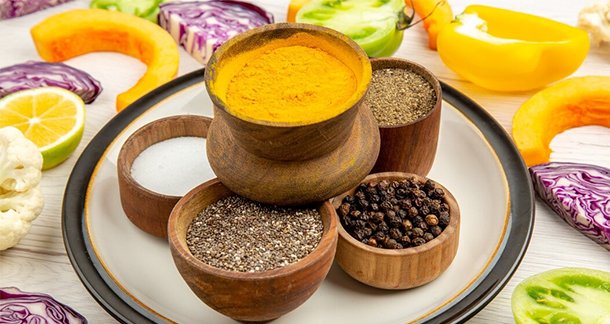Superfood has now become a new buzzword in recent years, especially in health and wellness discussions. Health-conscious consumers are increasing throughout the world, and so is demand for such products. Superfood is not something out of the world as it mainly refers to nutrient-rich food items that are very beneficial for health. It is where Asian superfoods like matcha, turmeric, goji berries, chia seeds, and moringa have been proven to be successful in the Western market. Their varieties and relation with natural remedies are some huge popularity factors.
So today, we will explore how such superfood items are capturing the Western market. Plus, we will also discuss the factors making these foods popular in the West along with challenges in this market.
The Rise of Superfoods
Defining Superfoods
A food content with high levels of vitamins, minerals, antioxidants, and other beneficial compounds can be considered in the superfood category. Improving immunity, energy levels, and digestion while decreasing inflammation remain their main purposes.
The Global Health Movement
The global health movement has significantly contributed to growing superfoods in the industry. The main motive of this movement is to promote preventive care and natural remedies. This is also the reason consumers are becoming more health-conscious over time and looking for something that can replace processed items from their diet.
Grand View Research shows an 8.4% CAGR for this particular market. The growth rate and the overall market are supposed to rise more as the health consciousness increases in the future.
Popular Asian Superfoods in the Western Market
1. Matcha
Matcha is a finely ground powder, which mainly comes from specially grown green tea leaves. Its vibrant green colour and too many health benefits made it this popular, and the market is about to reach $4 billion by this year itself.
If we talk about health benefits, matcha is full of antioxidant content, especially EGCG (epigallocatechin gallate). This particular substance is related to weight loss and heart health. Plus, it also comes into play when boosting metabolism and fat oxidation is required.
2. Turmeric
Turmeric comes from the Curcuma longa plant’s roots and contains curcumin. This particular compound makes it popular as it contains anti-inflammatory and antioxidant properties.
That is why consumers having problems with accessing inflammation in any form in their body are suggested to make use of it. Arthritis is one of the examples of the same. Plus, it can also improve cognitive function, according to some studies. Individuals with neurodegenerative diseases can get relief from this.
These overall factors make it popular beyond just as a cooking ingredient. Pharma and F&B industries are capitalising on it as supplements and beverages, which will make this market reach $5 billion by 2027.
3. Goji Berries
Goji berries are small red fruits native to Asia. These have been used in traditional medicines for centuries and it is in recent times that it has emerged as a superfood. Its high antioxidant content made it gain this popularity. Many consumers prefer it as a snack or ingredient in smoothies and granola bars and this is a growing segment in this list.
Its health benefits include nutrients like vitamins A and C, iron, and antioxidants. More than that, they also help get better immune function and healthy skin.
4. Chia Seeds
Chia seeds are tiny black seeds from the Salvia hispanica plant. Mexico and Guatemala are the main exporters of this ingredient, while its versatility makes it this popular. Energy bars, smoothies, and baked goods are some products in recent years that are leveraging this ingredient to market themselves as healthy. That is how it is about to be $1 billion by this year.
It contains a high amount of Omega-3 fatty acids, which makes it on the list of plant-based fat sources—beneficial for heart health. Plus, its richness in fibre helps improve digestion.
5. Moringa
Moringa comes from the Moringa oleifera tree—also known as the “drumstick tree” or “miracle tree.” It is full of vitamins A, C, and E, calcium, potassium, and protein as well. Moreover, its antioxidant properties help fight oxidative stress.
Consumers like to have it in smoothies, teas, and supplements. Another form of it is also in innovation and the market will continue to rise more.
Factors Driving Popularity in the West
The industry is already aware of how the health consciousness is increasing day by day. It is the main reason these superfoods have become this popular and reached a huge market in recent years. Plus, consumers seeking alternatives to their current processed food is another significant factor in its growth.
Social media platforms are another form of fuel for boosting its reach. There are many health influencers in the present who are promoting it by sharing recipes, health tips, and lifestyle content featuring these ingredients. This is how it is getting major exposure to the masses.
Globalisation has blurred the culinary boundaries and this new vision has allowed Western consumers to see beyond their culture and explore these Asian superfoods. Now, many of them like to have it in their daily routine in various forms.
The e-commerce revolution made it more accessible to worldwide consumers and it is not just limited to Asia as of now. This made health food stores and supermarkets stock wider varieties of the same.
Challenges Facing Asian Superfoods
Despite capturing this much market, there are many challenges related to these items:
Some consumers are unaware of the specific benefits of each ingredient that comes under the same umbrella. They consider the term superfood generally to refer to all the items under it. This is because many of them have heard about it from social media only and do not opt for proper scientific evidence before using it.
Sourcing it in the Western market is not as easy as other conventional food items, which makes it costlier as well. Moreover, organic farming-related production costs also add to it.
There are many companies launching their products using the term superfood, which also makes the market a little more saturated than expected. This requires genuine brands to separate themselves by keeping the quality higher and applying creative marketing strategies.
Conclusion
How superfoods have invaded the Western market shows the actual shift in consumer behavior. There can be a huge market for other tasty and mouthwatering food items but when it comes to superfoods, it mainly stands above the choices and opinions of health-conscious consumers. So, it is clear that the rise of these items is not just a temporary trend and it is here to stay and make its own industry. Although it is undeniable that social media has made it popular, scientific evidence is here to sustain the market instead of letting it fall after a certain level of growth.
Companies producing genuine products in these categories have huge scope and it is saturated for those who are just using the term to market their product, which will not sustain for long. So, there will always be space for real value providers. This overall approach will continue to benefit both the producers and consumers.



